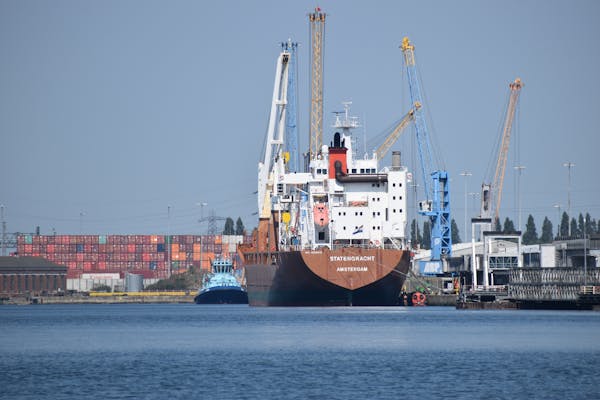Shipping High-Pressure Grouting Machine from Guangzhou/Shenzhen to Saint John, Canada
Shipping Method: FCL and LCL
For transporting large machinery like high-pressure grouting machines, two main shipping options are typically available: Full Container Load (FCL) and Less than Container Load (LCL). Each method has its benefits depending on the shipment’s size, budget, and urgency.
FCL (Full Container Load):
- This method involves booking an entire container for your goods, either a 20-foot or 40-foot container. It is ideal for large shipments or when the goods can fill an entire container, ensuring better security and protection.
- The shipping time from Guangzhou/Shenzhen to Saint John, Canada, typically takes 28 days, with port-to-port transportation. A CIF (Cost, Insurance, and Freight) arrangement means that the cost of the goods, shipping, and insurance is covered up until the port of destination (Saint John Port).
LCL (Less than Container Load):
- If the shipment doesn’t fill a full container, an LCL option is available. This involves sharing a container with other shipments, making it more cost-effective for smaller loads. However, LCL shipping can take a bit longer than FCL due to consolidation and deconsolidation processes at the port.
- The ocean freight journey still takes 28 days, but the overall delivery time might be longer, depending on the volume of goods and consolidation schedules.

Packaging of the High-Pressure Grouting Machine
Proper packaging is essential to protect the high-pressure grouting machine from damage during transit. Here’s a breakdown of how to effectively package this type of heavy equipment:
Crating the Machinery:
- The machine should be placed in a custom-built wooden crate. Crates are made from strong timber, designed to withstand the rough handling typical of sea freight. The crate should be fitted precisely to the shape and dimensions of the grouting machine to minimize movement during transport.
- For additional protection, foam padding or styrofoam can be used to cushion delicate parts of the equipment, such as hoses, valves, or electrical components.
Securing the Load:
- Inside the container, the crate should be securely fastened to the container floor using steel bands or wooden blocking. This prevents the machine from shifting during transport.
- For FCL shipments, the full container is loaded directly onto a cargo ship and securely locked, whereas, for LCL shipments, additional care must be taken during the consolidation process to ensure the crate does not shift among other cargo.
Protecting against Weather:
- Since the shipment will travel across the ocean, it’s important to ensure the packaging is waterproof. Crates should be wrapped with plastic sheeting or waterproof shrink-wrap to protect against moisture or water exposure during the journey.
- Rust prevention can be achieved by applying anti-corrosion materials or desiccants inside the crate, especially if the high-pressure grouting machine includes metal parts that are sensitive to rusting.
Labeling and Documentation:
- All crates should be clearly labeled with the destination address, handling instructions, and cargo details. This ensures the cargo is handled appropriately throughout the journey.
- Shipping documents such as commercial invoices, packing lists, and customs declarations should be securely attached to the outside of the crate in an easily accessible pocket.



